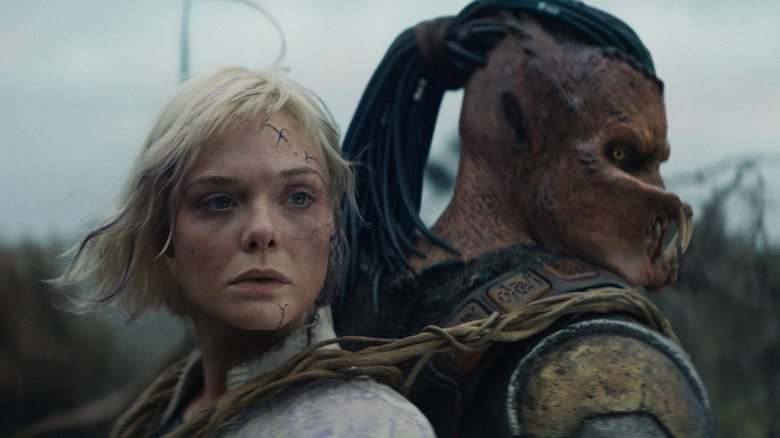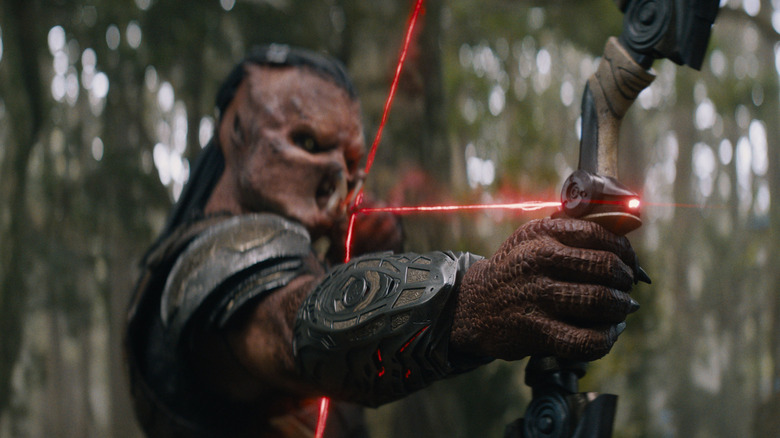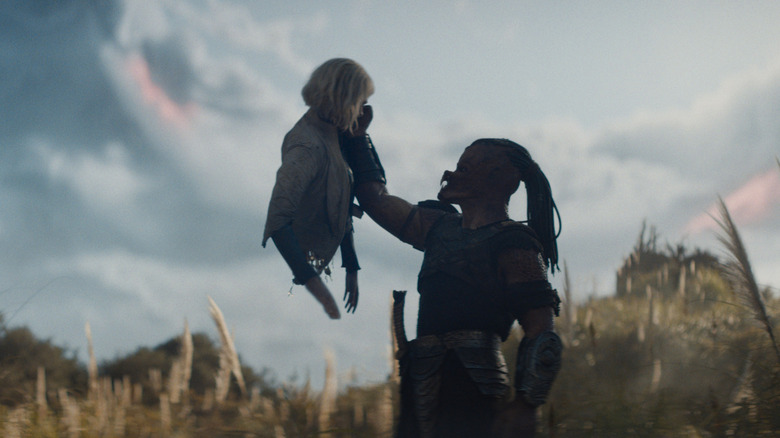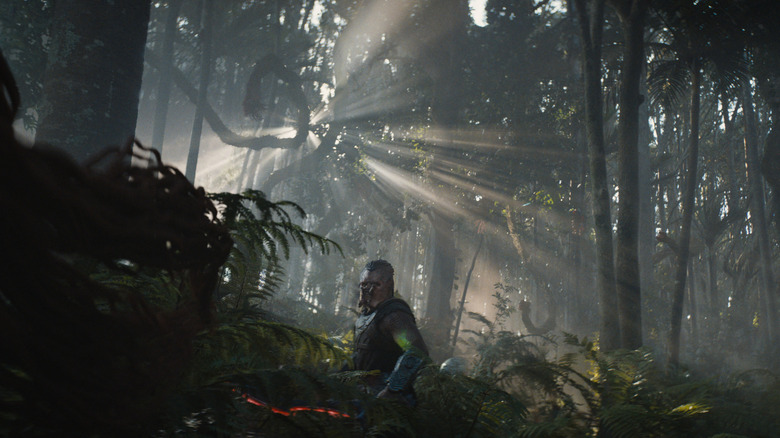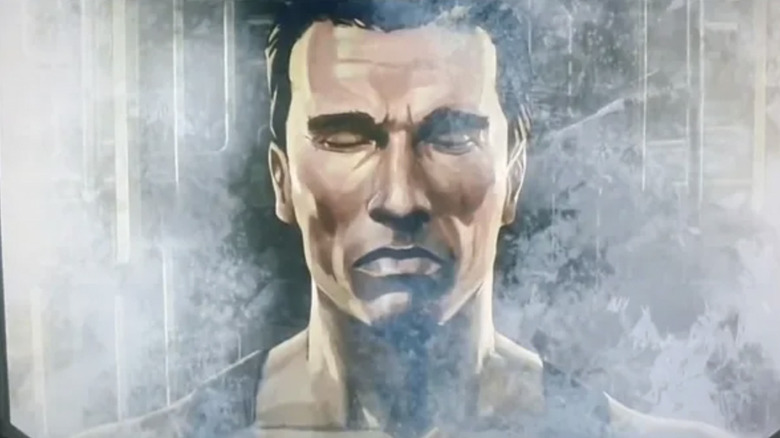Predator: Badlands Director Dan Trachtenberg On Making The Boldest Film In The Franchise So Far [Exclusive Interview]
Although the unspoken rule when it comes to franchises is for each successive installment to deliver a film that's both the same as and different from what's come before, no one wants to see a series become stagnant. The typical method of avoiding this problem is for a series to switch things up by hiring new directors for each installment. It's rare for a single filmmaker to be able to continually make bold creative choices with the same source material, but that's exactly what director Dan Trachtenberg has done for the "Predator" franchise over the past few years. After revitalizing the series with 2022's "Prey," he spearheaded the franchise's first foray into an animated feature with "Predator: Killer of Killers" earlier this year. Now the series makes its triumphant return to the big screen with "Predator: Badlands," and the film marks another big swing from Trachtenberg.
Rather than being a direct sequel to any prior "Predator" film, "Badlands" introduces the series' first Yautja protagonist, the young Dek (Dimitrius Schuster-Koloamatangi), who finds himself undergoing his initial solo hunt on the deadly planet of Genna. He's accompanied by a stranded Weyland-Yutani synthetic named Thia (Elle Fanning), who's been programmed to be as curious about other species as possible, which includes the Yautja. Thus, "Badlands" becomes a grand sci-fi adventure chronicling the pair's emotional coming of age, as they learn to set pre-conceived notions aside in order to forge their own paths. The film is a technical marvel, demonstrating yet again how an alien creature can lead a movie and proving just how much creative juice "Predator" and Trachtenberg have left in the tank. I had the pleasure of speaking with the director on the eve of the film's release, and we discussed the challenges as well as the joy of constructing such a bold sequel.
Note: This interview has been lightly edited for clarity and brevity.
The excitement of getting to add new elements to the Predator universe
Between this and "Killer of Killers" and "Prey," it really feels like you've enriched the Predator, the Yautja culture, in such a huge way. What was it on this movie specifically that gave you that feeling of, "Oh, we can do that? We're getting to do this?"
Oh my gosh. Almost every thing. Him wielding a sword, which is, oddly, a unique weapon for the Yautja. We haven't really seen it in the movies, and it's a very specific sword. So creating a new weapon like that and riding around on their version of a hover bike and directing these fight sequences, and there's one very specific fight sequence with Elle Fanning's character that I think is one of my favorites and very inventive and clever in addition to just being an awesome fight. So yeah, this movie really didn't want to just be like: "The Predator's the protagonist, that's really unique, and the rest is a movie you've seen before!" We really tried to continue the mindset of being bold, and having every decision be a really surprising one.
How Trachtenberg and his actors worked with the film's extensive visual effects
Again, with these three films that you've been involved with the last couple of years, it seems to me that the methodology of making each one might have varied. "Prey" is a period piece, "Killer of Killers" is animated, and this takes place on this whole new alien planet. What was the biggest filmmaking challenge for you on "Badlands?"
The biggest filmmaking challenge on "Badlands" was absolutely the amount of visual effects. There's maybe 10 to 15 shots that aren't visual effects in the entire movie, and especially when the main character, the heart of the story, includes visual effects — and by the way, his buddy also includes visual effects. So when you're cutting a movie, when you're putting it together, you hope to start to let what it actually is really speak to you. And when you're on set, you have to use your imagination a lot, like, "This is going to eventually feel like this or that." For this movie, we just had to actively engage our imaginations the entire way because it wasn't until things were finally coming in, at the end there, that we really got to see [how it looked]. Like, Demetrius's face was in the movie for a very, very, very long time, and he was delivering an incredible performance and we all bonded to it in a specific way, and then we started to get Dek's face in, and I was like, "Oh my gosh, the nature of the scene feels so different. It feels this way or that." So yeah, it was just very challenging to make something that had so many visual effects components in it just for the mundane, for the normal stuff, because our characters were so unique.
I'm glad you said that, because this film really is still a character piece. It's not just an effects showcase. For the actors and for you too, what was it like on a day-to-day basis on the set in terms of how you were able to give them space to play scenes with each other?
What was very helpful was Demetrius having the open cowl. So normally a Predator is there wearing a mask, not just the Bio Mask, but actually the prosthetic mask. And Elle was able to look at Demetrius's eyes when she wasn't strapped to the back [of him]. And we were actually on location for most of the movie in New Zealand, and got to really feel immersed in our environments. And I love some improvisation, and Elle really embraced that and improvised a lot of great moments and brought a naturalism to things. So it was just a really lovely time with two tremendous actors that thoughtfully examined the meaning behind everything and really brought as much out of it as they could.
World of Warcraft, razor grass, and the visual influences on Predator: Badlands
One of the things I've always loved about you as a filmmaker is that you really seem to bring a lot of video game influences and logic into your cinema. Were there any specific video games that influenced you making this? I saw maybe a little bit of "Shadow of the Colossus" or "Horizon Zero Dawn" in there...
"Shadow of the Colossus." Huge inspiration, not just aesthetically for some designs, but really even just for the nature of the story. Also, I mean, "Horizon," probably of course, because there's a fusion of bio and tech, and futurism and naturalism. Oh, there's a character in the movie called Bud that was initially inspired by a Murloc in "World of Warcraft." Just aesthetically, we were trying to find the right kind of silhouette [and] I kept thinking of Murloc. In fact, the movie's title was initially just a codename. I thought the movie was going to be called "Yautja," and the codename for it was "Badlands." It eventually became "Backpack" when we were filming, but I needed a codename. I needed to come up with it quick, and I looked over at my computer and on my Blizzard launcher, my friend was in WOW, in Badlands. It says the character name and the location in the game that they were in, and it said "Badlands." And I was like, "That's a great title."
I also saw a lot of what felt to me like an influence of classic sci-fi novel art in the film, like Michael Whelan or something like that. How did you and your team develop Genna and not make it, for instance, Pandora from "Avatar," but still keep it rooted in the tradition of sci-fi worlds?
It's challenging. There are so many great [fictional worlds], Pandora is so all-inclusive, and of course all the sci-fi worlds out there. But I started out iterating on concept art. I worked with this guy, Andre Wallen, who I remember, he just put the Predator silhouette in different kinds of aesthetic locations. Naturally, there's a grim, eerie quality to his work that steers things away from things like Pandora. And he had done the Predator standing in an ice field, but when I looked at it quickly, it almost looked like blades of grass, like white blades of grass. And that gave [us] the story idea, because we hadn't even had a script finished yet, or even a treatment, I think, we were kind of simultaneously developing the treatment as well as doing the concept art. And that's what gave birth to the razor grass sequence. But we really wanted to make sure that everything truly felt deadly, from the blades of grass to the trees to the flora and fauna. It wasn't just like "the creatures are deadly, but look at how majestic the world is." That it all really could kill you, but still have a beauty to it.
The future of Predator includes 'some pretty bold ideas,' according to Trachtenberg
It seems like your work on these last couple of films in the franchise has really expanded it in a way that feels so natural to the series, but also gives it this seemingly almost limitless potential to it. In the talks that you've had, and I know specifics have to be avoided, but is there anything that you feel is off the table in terms of like, "Oh, we can't go there"?
I don't think ... I mean, we can't do "Predator versus Transformers," because that's at another [studio], or "Fast and Predatorius," not that I'd want to. But no, we've had some pretty bold ideas so far, and there's still some pretty bold ideas that have yet to be realized, and everyone's been really excited about them. But we'll just have to see how "Badlands" does before we have a chance to get a crack at it.
"Predator: Badlands" is in theaters now.
